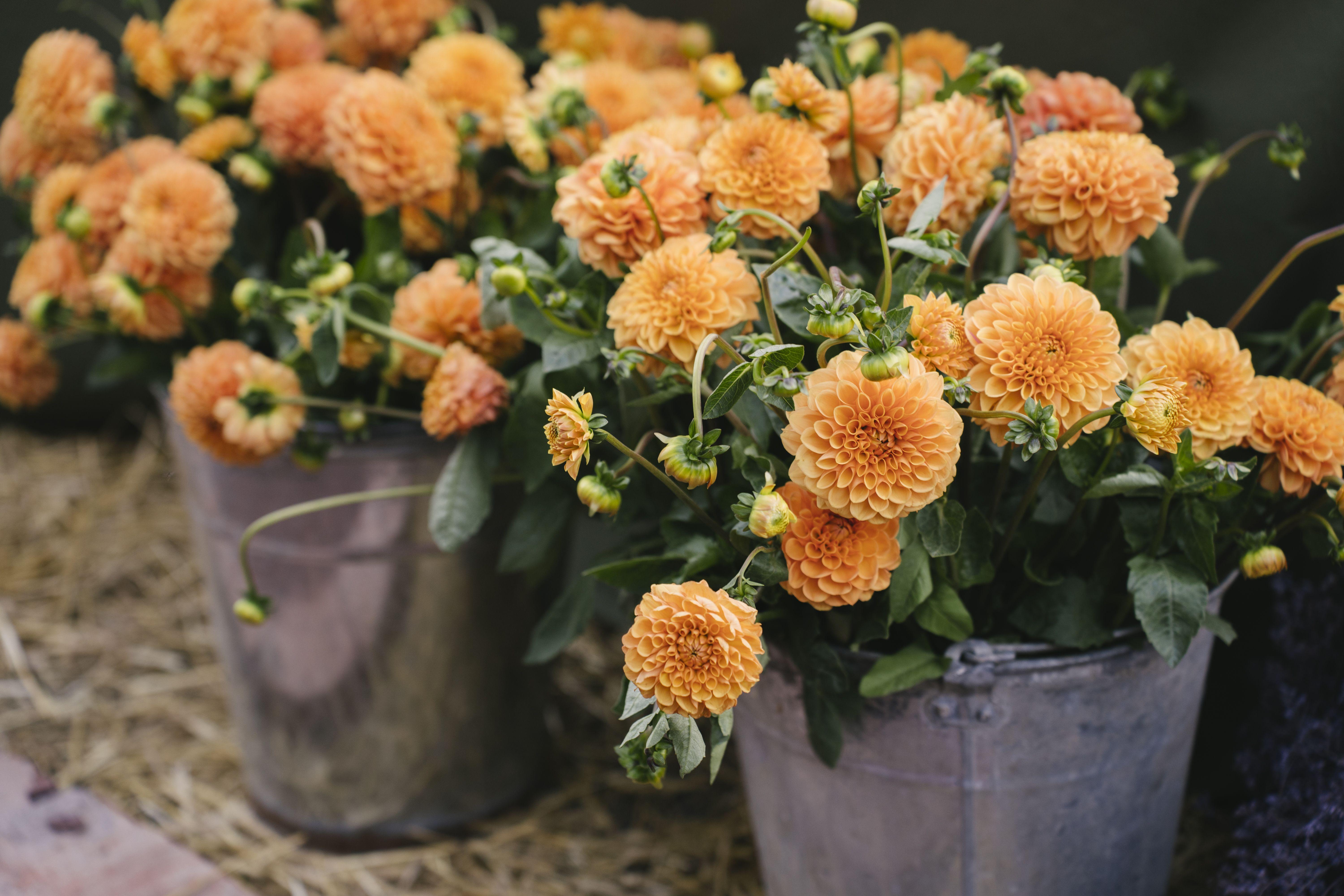Joanna Gaines made ranunculus the flower of the spring season, while Taylor Swift’s late summer engagement had everyone swooning over hundreds of fluffy roses. And while we’re absolutely obsessed with mums for your fall porch display, what about the absolute best flower for all your fall arrangements?
We’re picking a flower that’s a showstopper through and through: the beloved dahlia. When you picture a dahlia, dozens of different shapes, colors, and sizes likely come to mind. Dahlias are renowned for their never-ending varieties—much like roses, dahlias can come in almost any flower form you desire.
Below, we're deep-diving into all things dahlias and how to keep them thriving this season.
Ball Dahlias
Ball dahlias are arguably most common: they’re perfectly spherical flowers with petals shaped like little tubes. These are the type of flowers you’d probably see winning first place at your local county fair during the fall. Their tall, thin stems make them look as though they’re floating high above their delicate green leaves.
In a vase, ball dahlias look so effortlessly perfect that they almost seem fake. It’s fun to arrange a dozen of them at once in a single vase, cut at varying heights so that they all burst out of the top at different angles.
Informal Decorative Dahlias
Because there are so many dahlias to love, they have quite the naming category. Informal decorative dahlias refers to a broad category of dahlias that don’t have that symmetrical look to them. Instead, their petals are fluffy, twisty, and don’t form that perfectly ball-like shape that other dahlias do.
Informal decorative dahlias are particularly beautiful when styled with other flowers. Use just one to three large informal dahlias with smaller additions like spray roses, cosmos, eucalyptus, or larkspur. The dahlias will take center stage and look especially lush against small filler flowers.
Related
Arranging Your Dahlias
It’s always a great idea to arrange multiple types of dahlias together. Try mixing the shapes, sizes, and colors of the dahlias you choose for your arrangement to create an autumnal display that naturally complements each other. Ensure that you cut them at varying lengths and stagger them by height for a bouquet that appears to be freshly picked from the garden.
For fall, opt for darker, moodier colors like burgundy, dusty orange, and deep purple. Help your dahlias stand out more by adding in a few lighter colors to balance things out—gradient peach, light yellow, or blush pink dahlias add dimension.
If you’re looking for a lighter arrangement, soft orange, butter yellow, and blush pink also go well together. And for a subtle mix of colors, choose dahlias of the same gradient—dahlias with purple centers and white tips are common, as are fiery red dahlias that turn yellow at the ends of their petals.
Local Tips
The dahlias available at your local grocery store or florist will likely vary by location and season. It’s best to go in with an open mind; the flowers you get can even change by week. Choose a few general color palettes you think you’d like, and work from there.
Keeping Dahlias Alive
When cut, the lifespan of your dahlias can vary significantly—the secret is to purchase them as fresh as possible. Visit your local farmer’s markets, roadside flower stands, or buy straight from the farm to guarantee you get them as close to harvest as possible.
One method of making your dahlias last longer is to cut the stems at an angle, then dip the ends into boiling water for about 30 seconds. Place them in a vase filled with water, removing any leaves that touch the water. You’ll need to change the water out at least every other day. You can also try keeping your dahlias in the fridge overnight to prolong their lifespan, and be sure to keep them out of direct sunlight.
Ball dahlias are often said to last the longest. As a bonus, they also dry quite well—even when kept in a vase—so they might stick around for longer than you think.



